Tianqiong Sensor IOT Technology Co., Ltd
Sales Manager:Ms. Emily Wang
Cel,Whatsapp,Wechat:+86 15898932201
Email:info@fengtutec.com
Add:No. 155 Optoelectronic Industry Accelerator, Gaoxin District, Weifang, Shandong, China

Sales Manager:Ms. Emily Wang
Cel,Whatsapp,Wechat:+86 15898932201
Email:info@fengtutec.com
Add:No. 155 Optoelectronic Industry Accelerator, Gaoxin District, Weifang, Shandong, China
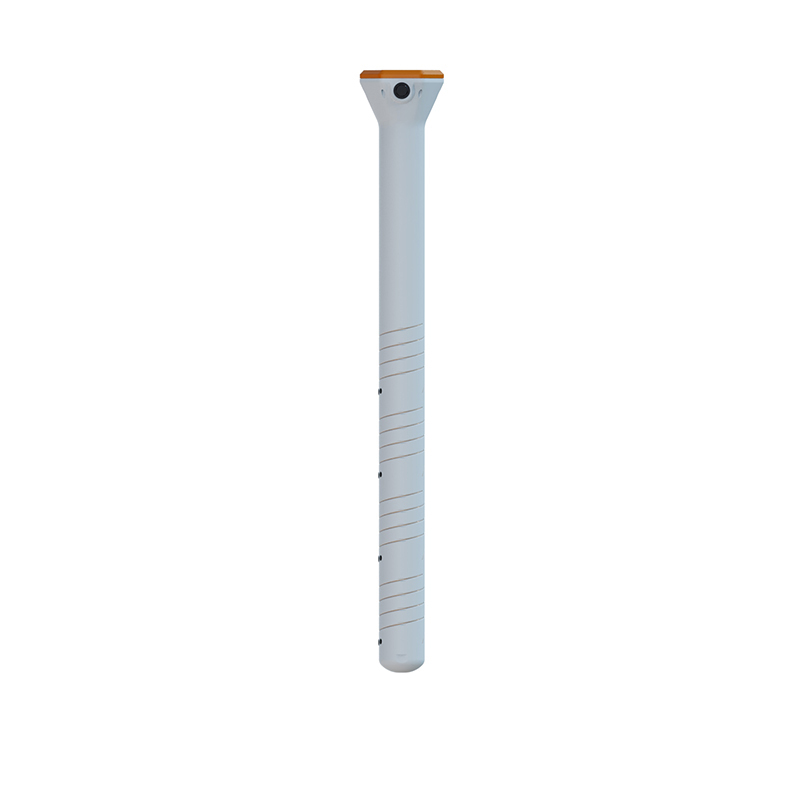
Model:FT-GS4
Brand:tianqiong
1.Introduction to Tubular Soil Moisture Monitor Products
Tubular Soil Moisture Monitor is a soil moisture meter suitable for water-saving agricultural irrigation, greenhouse vegetables, flowers and gardening.Tube soil sensors are sensors used to monitor soil profile temperature, soil profile humidity, and soil profile conductivity.They collect soil temperature, moisture, and conductivity can be widely used in agricultural engineering fields such as smart greenhouses, smart orchards, and smart irrigation.
2.Tubular Soil Moisture Monitor product parameters
Sensor startup time: 60S
Sensor supply voltage: DC12V
Sensor power supply current: 22mA
Sensor power consumption: 0.26W
Communication method: 485 Modbus RTU protocol
Measurement parameters: 4 layers can be measured simultaneously (the number of layers can be customized below 10 layers)
Measurement principle: Create a mathematical model by measuring the dielectric constant of the soil, and design a spiral measuring electrode to measure soil volume moisture content data.
|
parameter |
Measurement range |
Accuracy |
Resolution |
unit |
|
Soil temperature |
-30~70℃ |
±0.3 (-10~70℃) |
0.01 |
℃ |
|
Soil moisture |
0~100% |
±3% (loam) High organic matter soil (soil organic carbon content >12%) High coin content soil (cosal content >45%) Due to its dielectric relaxation properties, calibration may be required for specific soil types. |
0.1% |
--- |
|
Soil conductivity |
0~20000us/cm |
±3% (0~10000us/cm) ±5% (full range) |
1 |
us/cm |
3.Advantages and features of Tubular Soil Moisture Monitor
★Single soil tube sensor can measure soil parameters at multiple depths at the same time, and the monitoring depth can be customized (less than 1M).
★The sensor adopts a low-power design with a power consumption as low as 0.26W, and is suitable for long-term unmanned monitoring in the field.
★Each layer of the sensor can independently measure temperature, humidity and conductivity parameters.
★The sensor shell is made of imported PC material, with high strength, corrosion resistance and pollution-free to the environment.
★The sensor waterproof level reaches IP67, and it should be subject to long-term outdoor monitoring.
★The sensor measures the average humidity in a certain area, making up for the limitations of single-point measurement.
★The sensor adopts an independently designed spiral measuring electrode to improve the contact between the sensor and the soil and avoid measurement errors caused by air gaps.
4.Precautions for using Tubular Soil Moisture Monitor
a.The sensor should be used strictly in accordance with the installation instructions.
b.When multiple sensors work at the same time, they must be spaced more than 3 meters apart.
c.The principle of sensor measurement is limited.The sensor measurement site is 3 meters in the central radius, and there should be no electromagnetic cables and strong magnetic radiation interference, to avoid huge errors and damage in the sensor measurement.
d.The installation environment of the sensor should comply with the measurement range of the sensor to avoid irregular behaviors such as exceeding the range.
e.The sensor installation should be avoided in the environment of strong acids, strong alkalis, heavy oil and polluted heavy metals.
f.The sensor is a soil measurement sensor.It is prohibited to use this sensor to measure other substances.
g.The sensor installation environment cannot have strong vibration.
h.The sensor cannot have too strong external force.
i.Disassembly is prohibited.Disassembly is deemed to be non-compliant and no service will be provided in the future.
5.Tubular Soil Moisture Monitor installation method
Drilling method:
1.Take the soil drill bit, handle, and support rod.After completion, put the soil drill vertically on the ground, hold the handle tightly with both hands and press down clockwise and rotate slowly.(Note: Don't use too much force, be sure to turn slowly and a few more turns to prevent the drill bit from running off the hole and breaking into a crooked hole)
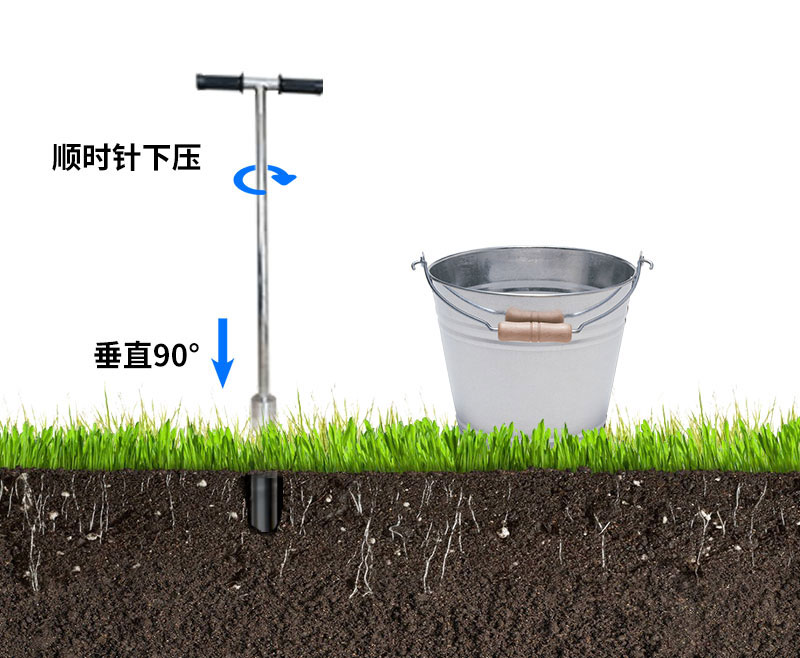
2.Take out the soil drill from the hole, put it in a basin, and use tools to collect the drilled soil into the basin for use in mixing mud.(Note: First, the first thing is to drill soil is too much impurities, so it is not collected)
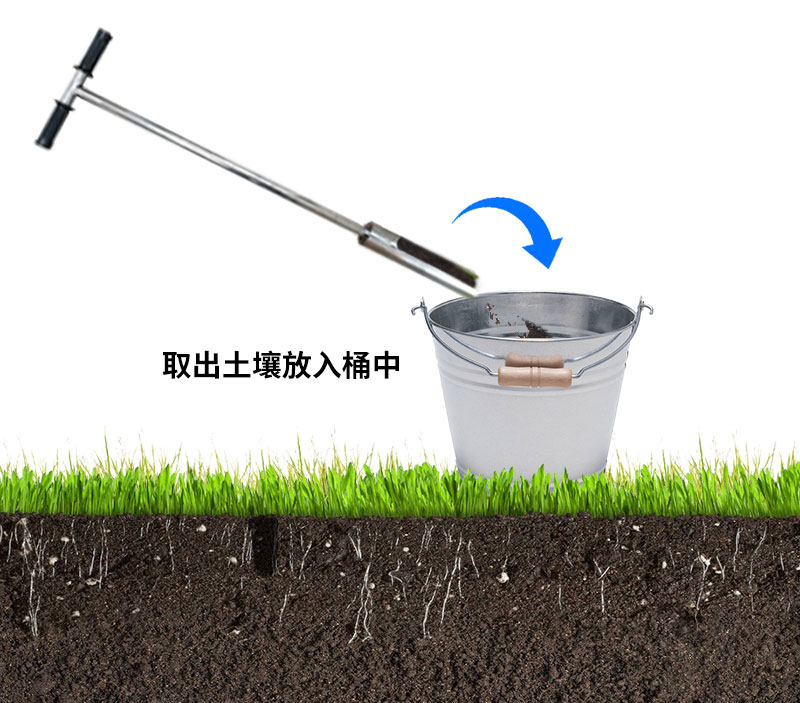
3.Repeat the above-mentioned holes and soil extraction, and try to put the sensor into the hole in the process (do not forcefully touch the equipment to bottom out) to test whether the depth of the hole is suitable; if there is any lag, use a soil extraction drill to correct it to ensure that the sensor is placed and removed smoothly; until the hole depth is flush with the installation position marked by the sensor (zero scale line), the hole is completed.
4.Pick out soil impurities, gravels, roots, soil blocks that are not easy to dissolve, etc.Rub the soil finely to make it smooth.
5.Pour in appropriate amount of water and stir thoroughly until it is viscous; the loam mud should not generally be thicker than "seed sauce".
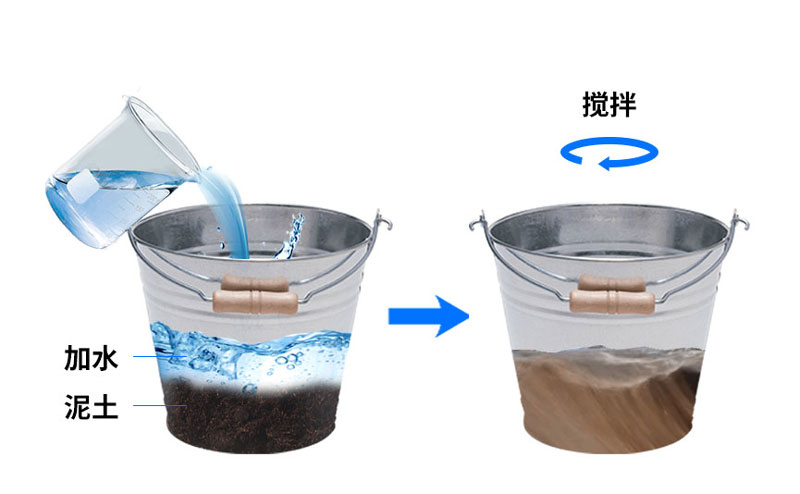
6.Pour the mud slowly into the hole, about 1/2 of the hole; it can be increased or decreased according to the actual situation.
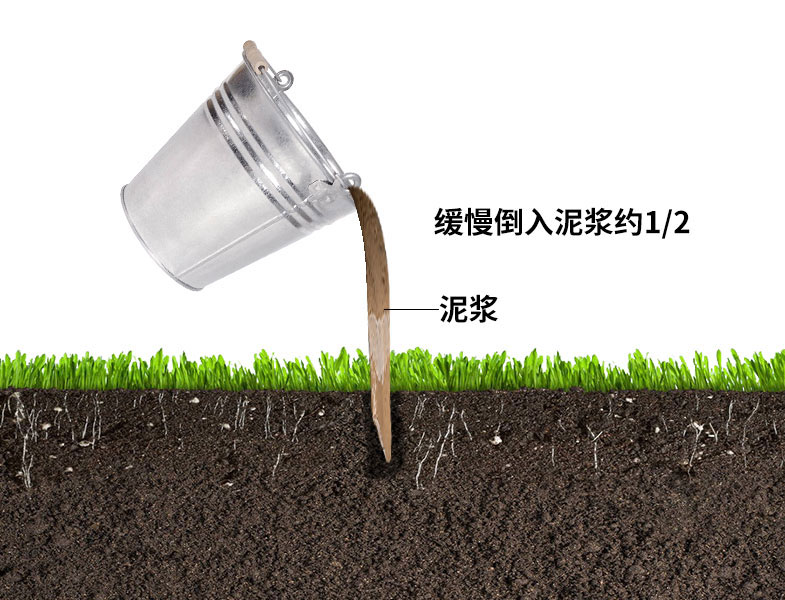
7.Slowly place the sensor into the hole, rotate clockwise and press down.The speed is too fast, which may cause the bubbles to not be completely discharged.(Note: Do not pull up the sensor during the re-rotating and down pressure to prevent gas from being sucked into the hole again)
8.When the sensor is installed to the correct depth, some mud will overflow around the equipment and the grouting is completed; at this time, the sensor installation depth is flush with the hole.(Note: Remove excess mud outside 3CM around the sensor to prevent agglomeration from affecting moisture infiltration)
Burial method: Use a pick to dig a deep pit to bury the sensor and bury the sensor and refer to the drilling method for processing details.
In contemporary society, air quality is intricately intertwined with our daily lives. Air pollution not only takes a toll on our physical well-being but also exerts adverse effects on the ecological environment and economic development. Globally, air pollution has given rise to a surge in respirator...
In the context of the increasingly accelerating urbanization process today, air quality has become one of the key elements for measuring the quality of life. However, due to the high construction and operation costs and fixed layout, traditional large-scale environmental monitoring stations find it...
In the field of wind power generation, wind measurement is of great significance. Traditional wind - measuring methods, such as wind towers or radars, are effective but have limitations. Wind towers can only measure at fixed locations, while radar equipment is expensive and bulky, making it difficul...
The petrochemical production process involves a large number of flammable and explosive chemical substances, such as crude oil, gasoline, ethylene, and so on. During storage, transportation, and production, these substances can easily trigger explosions and fires once they encounter an ignition sour...